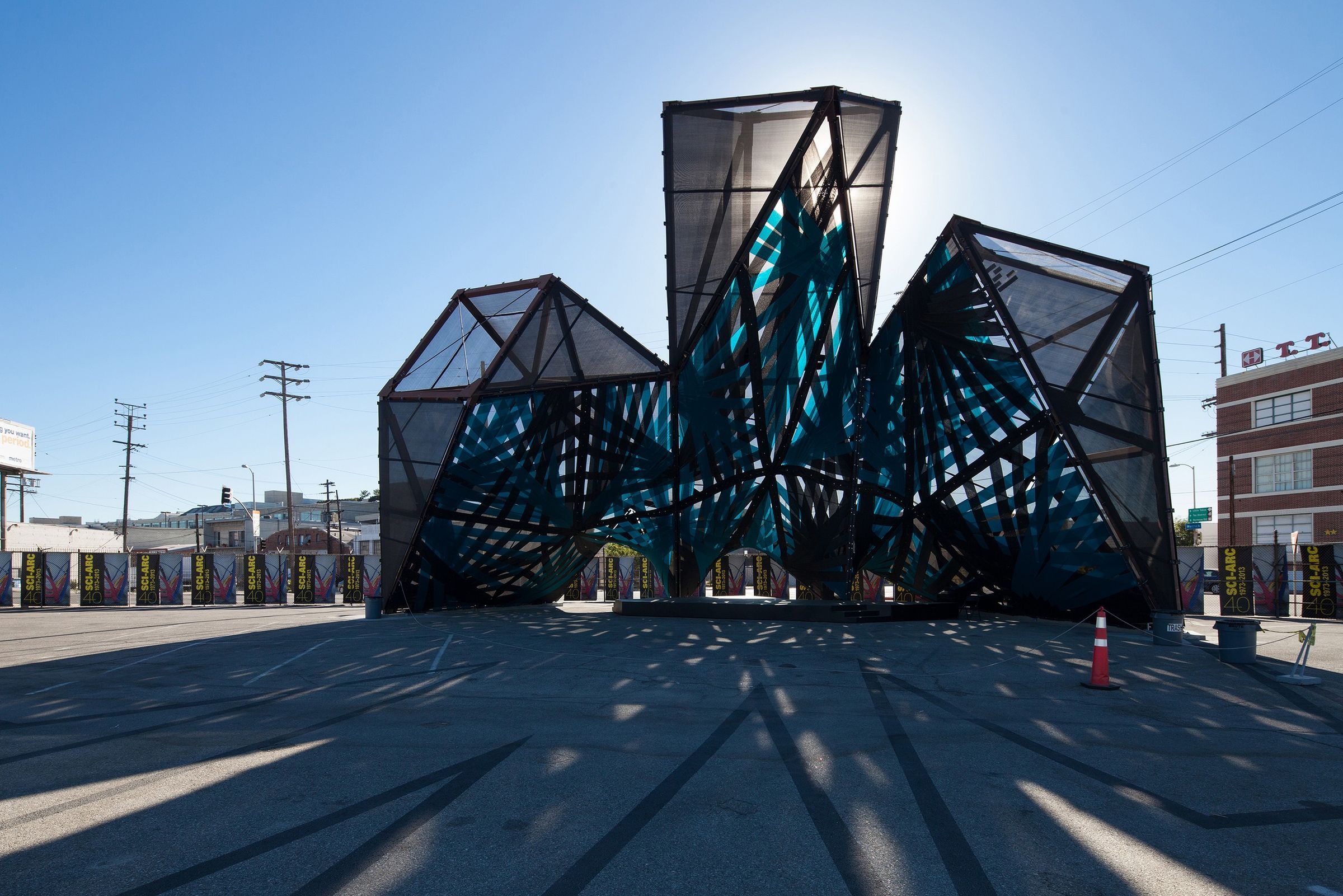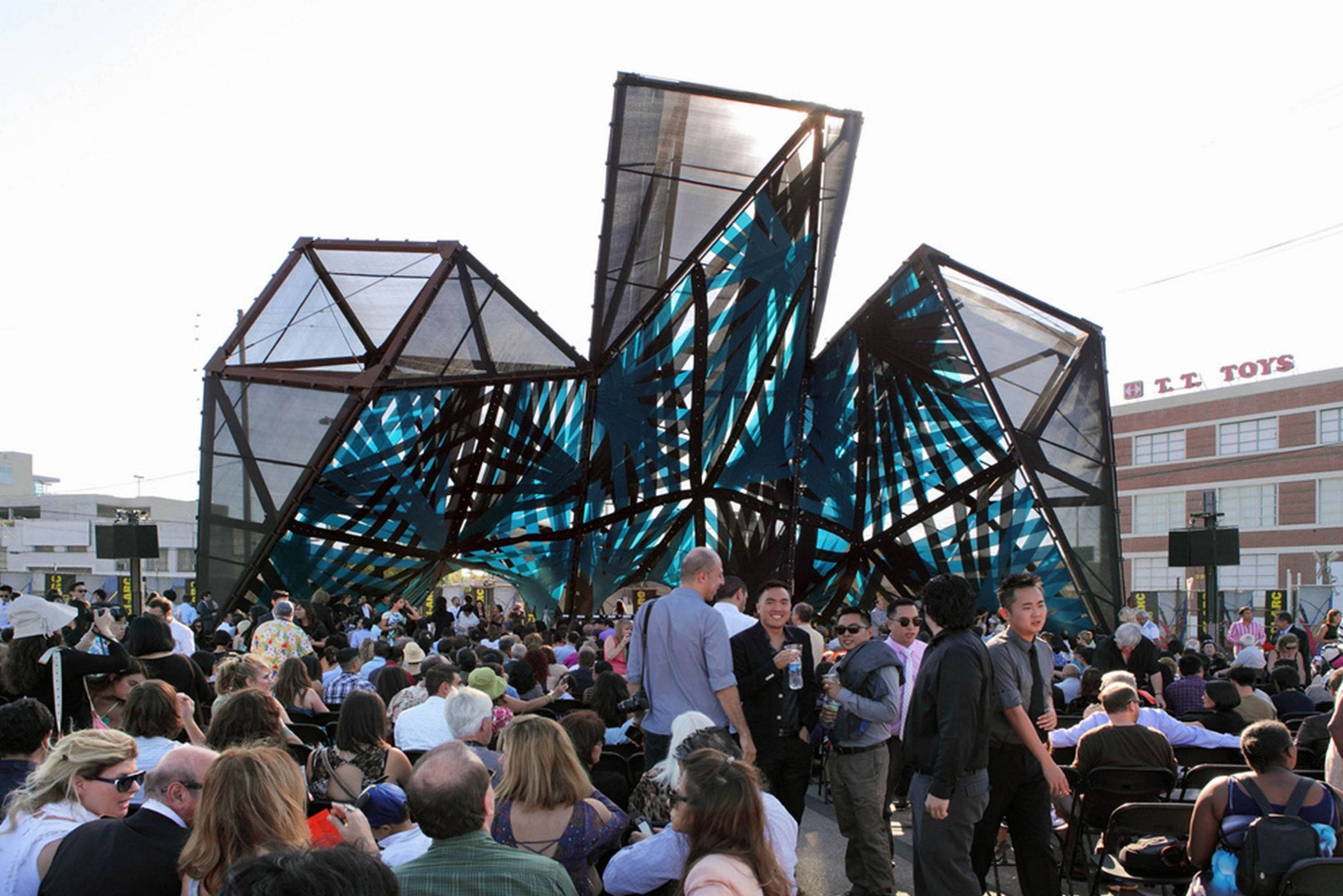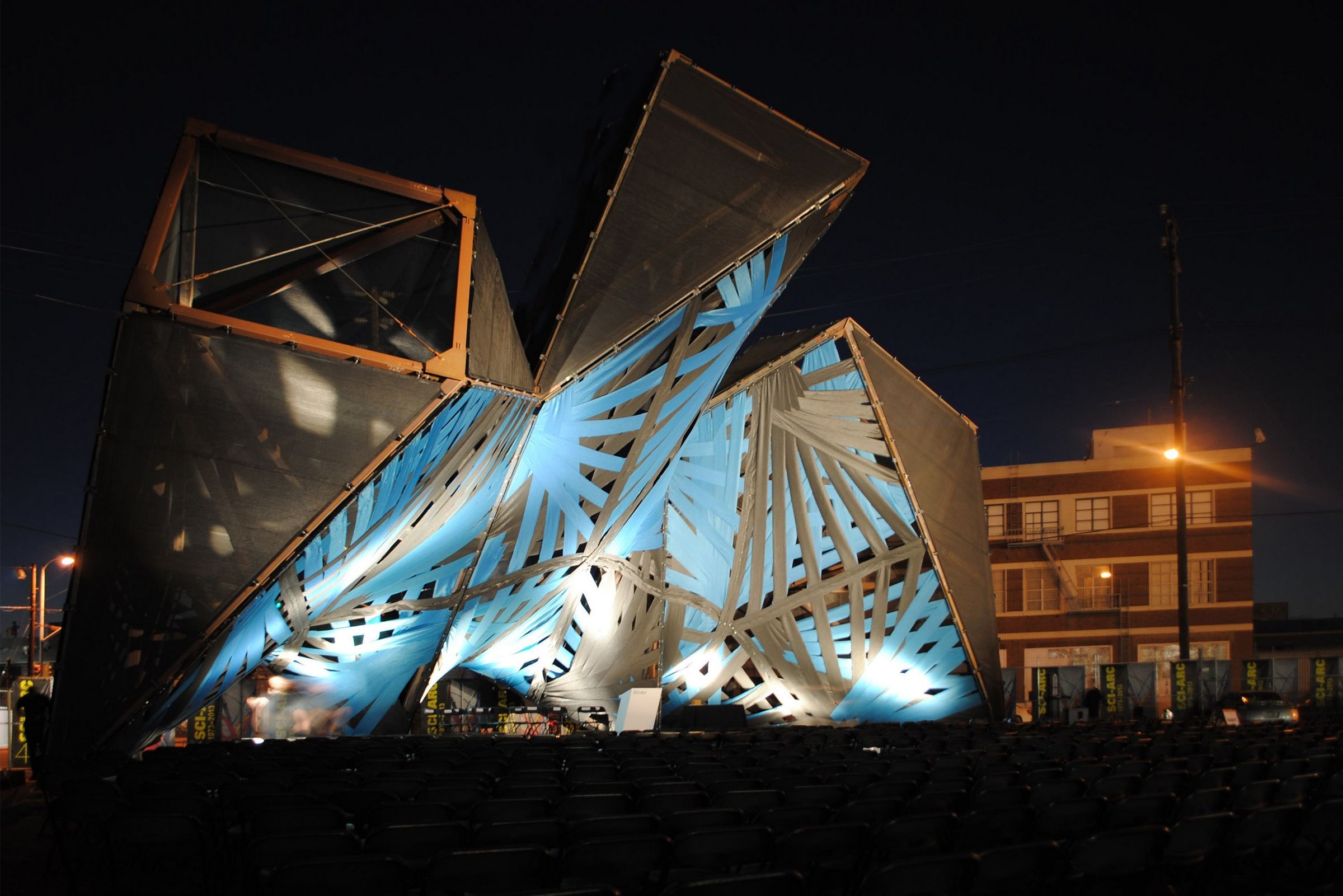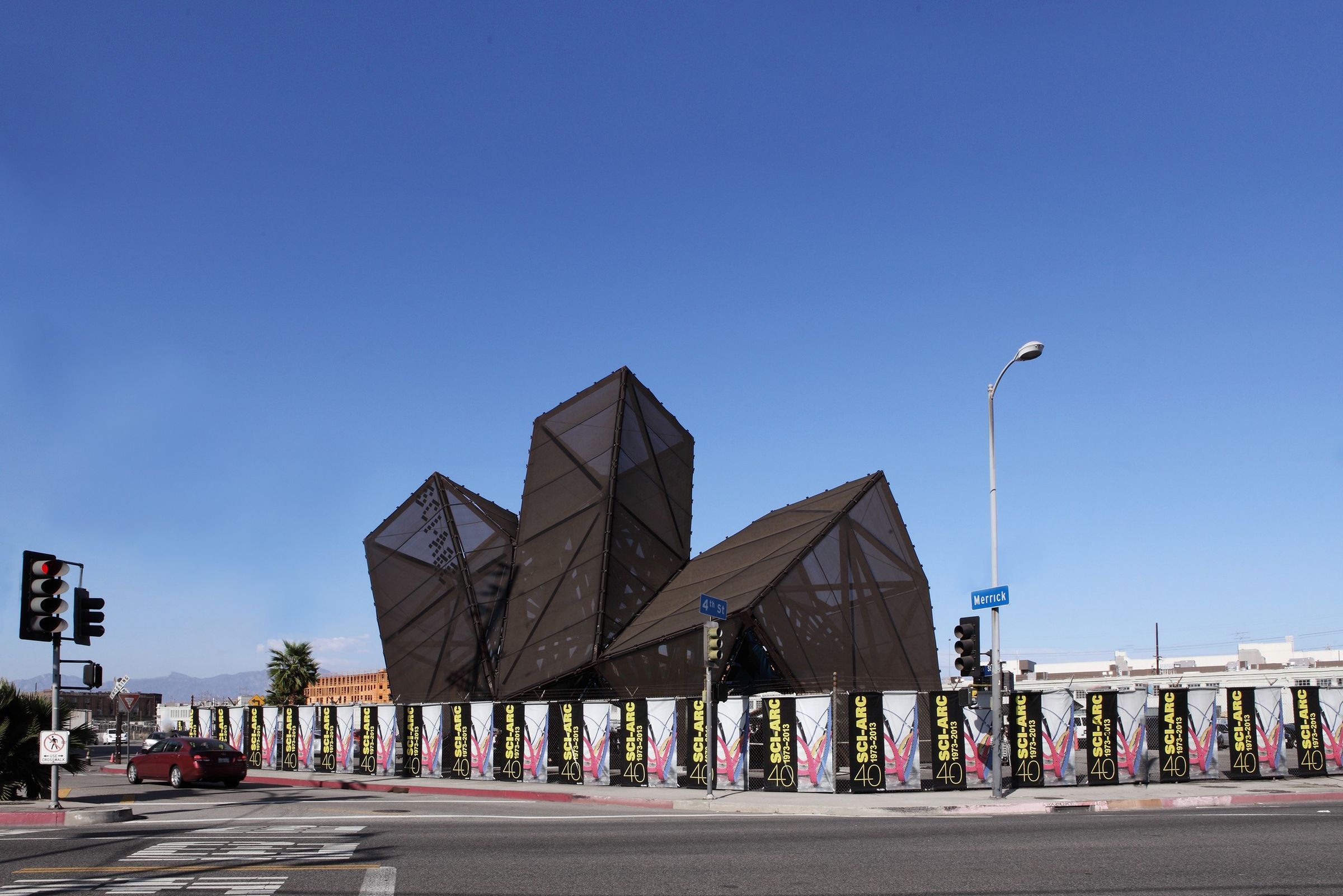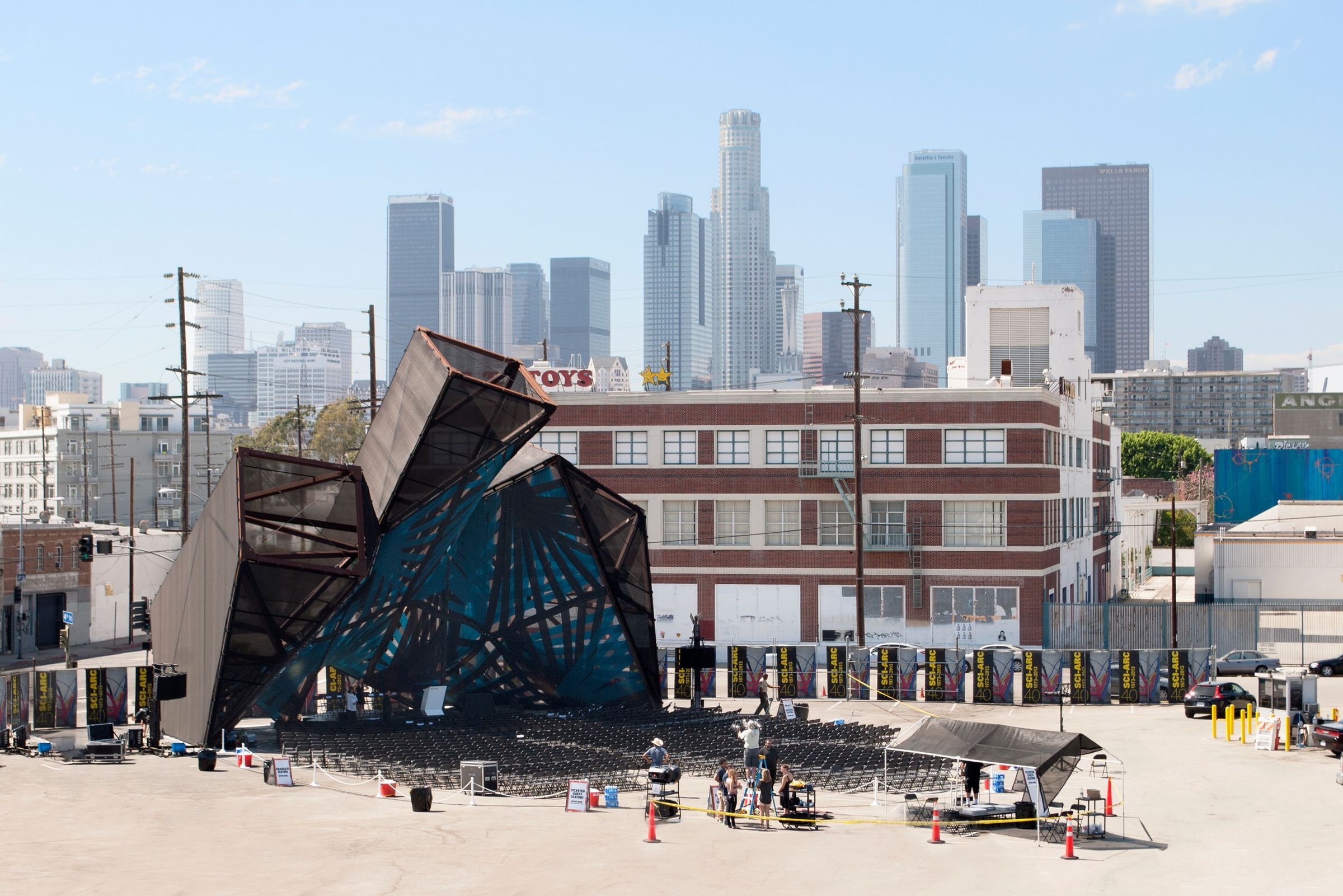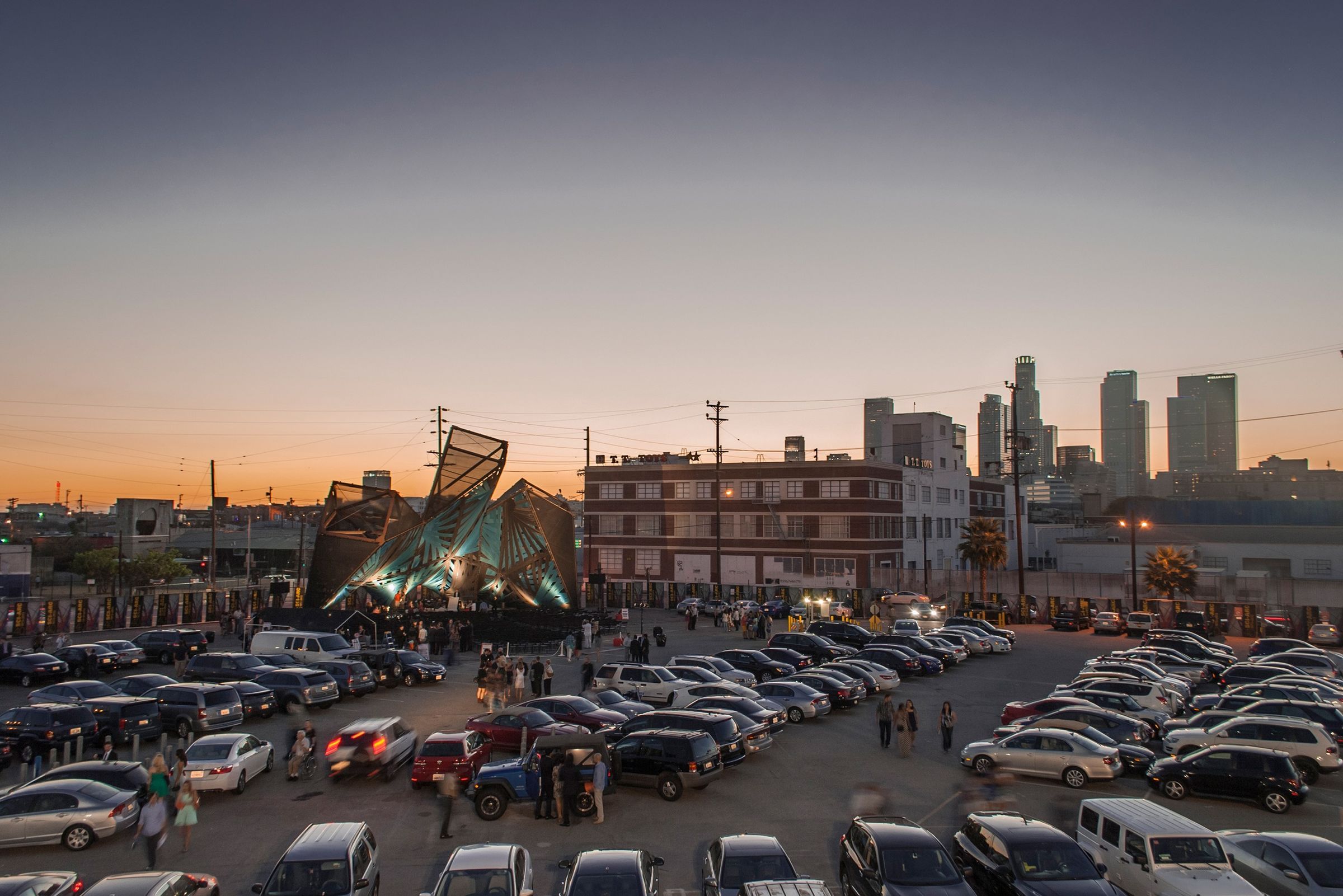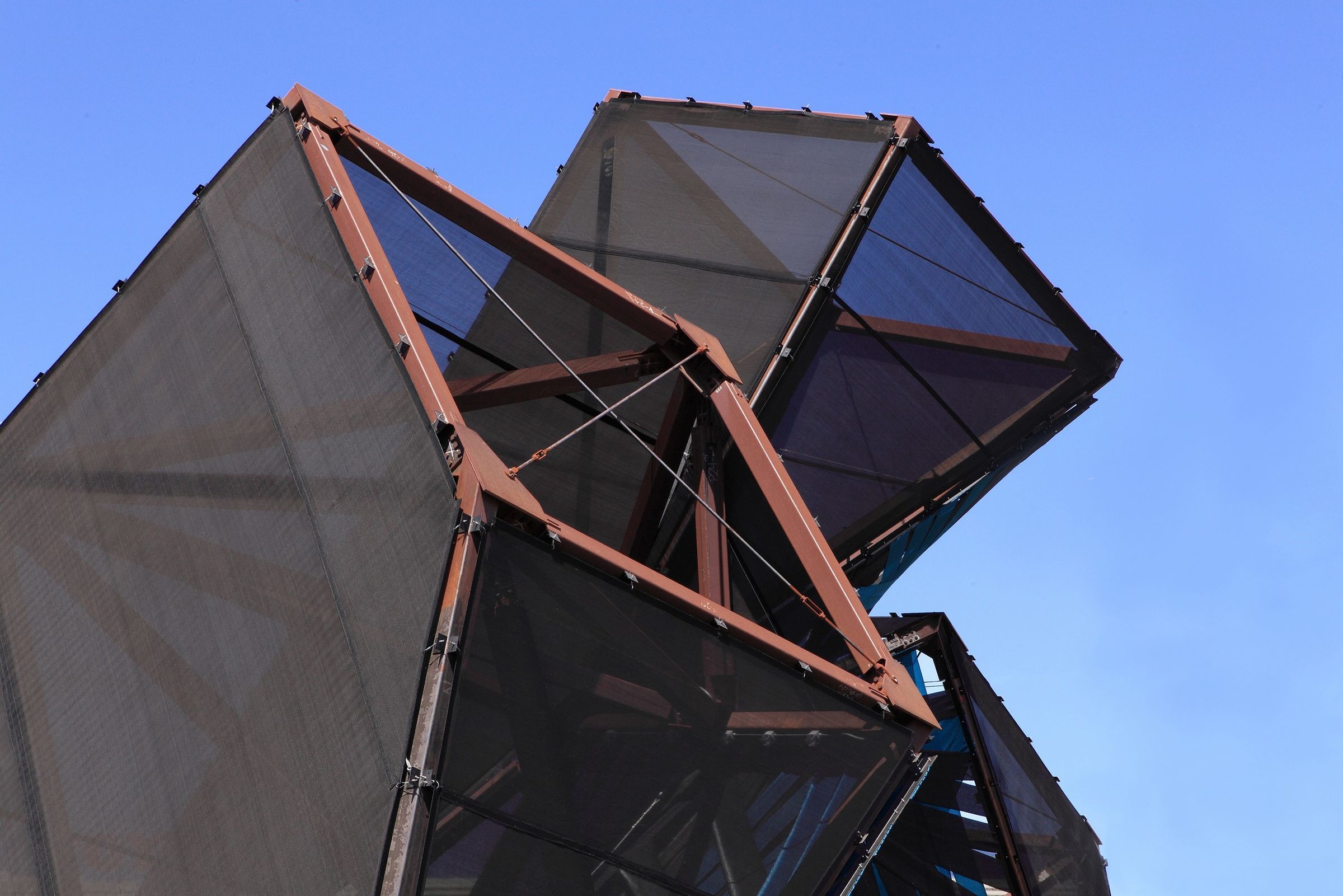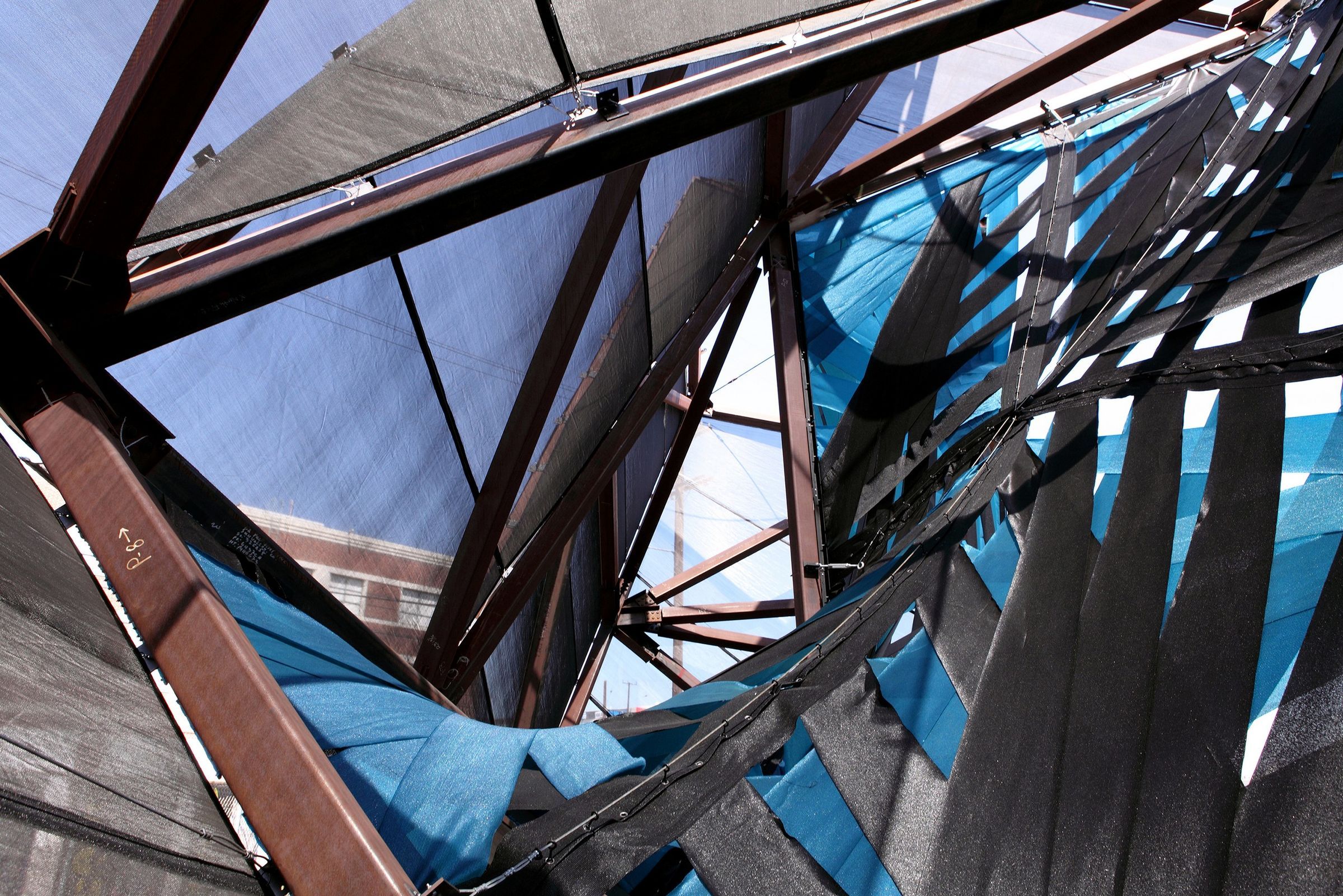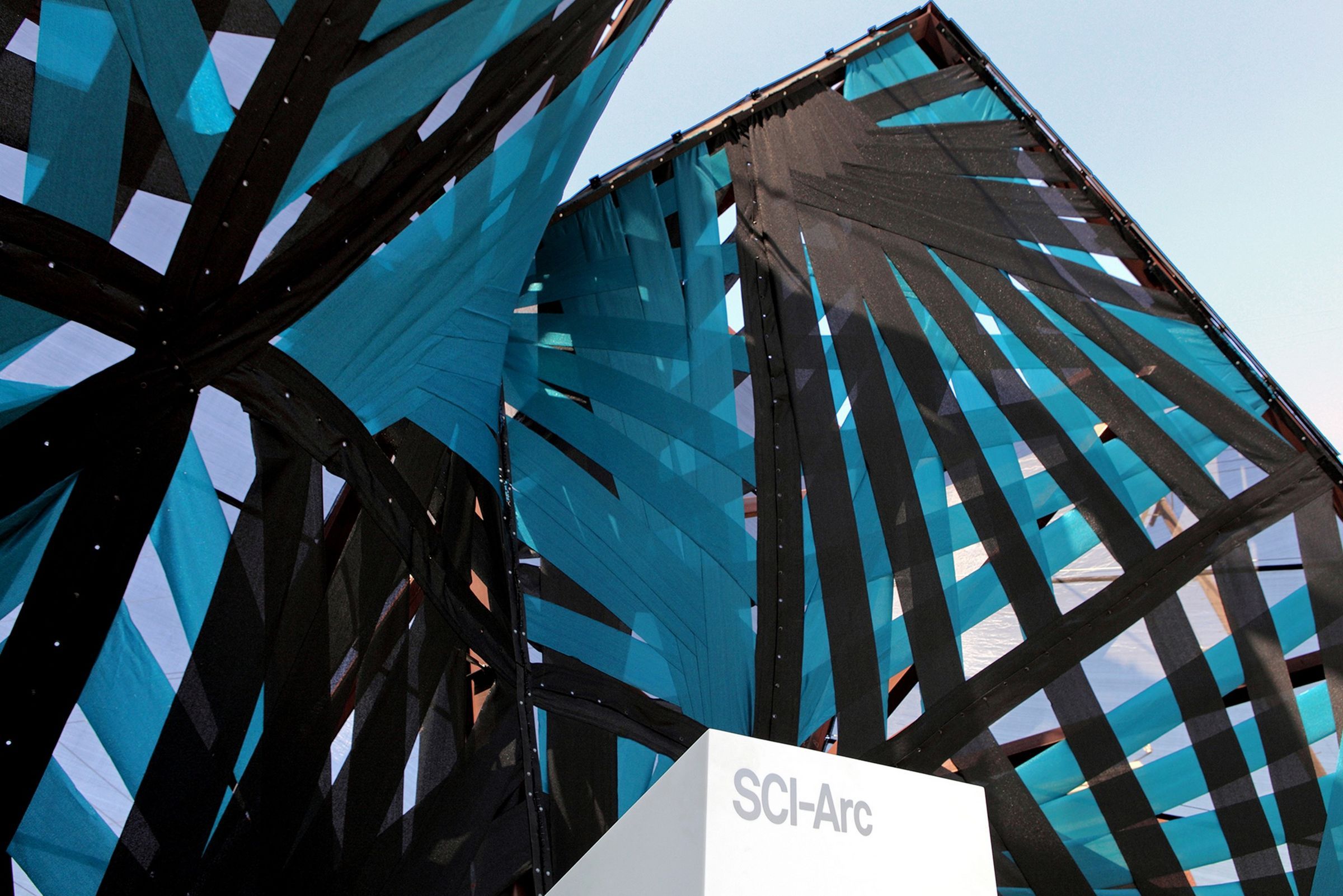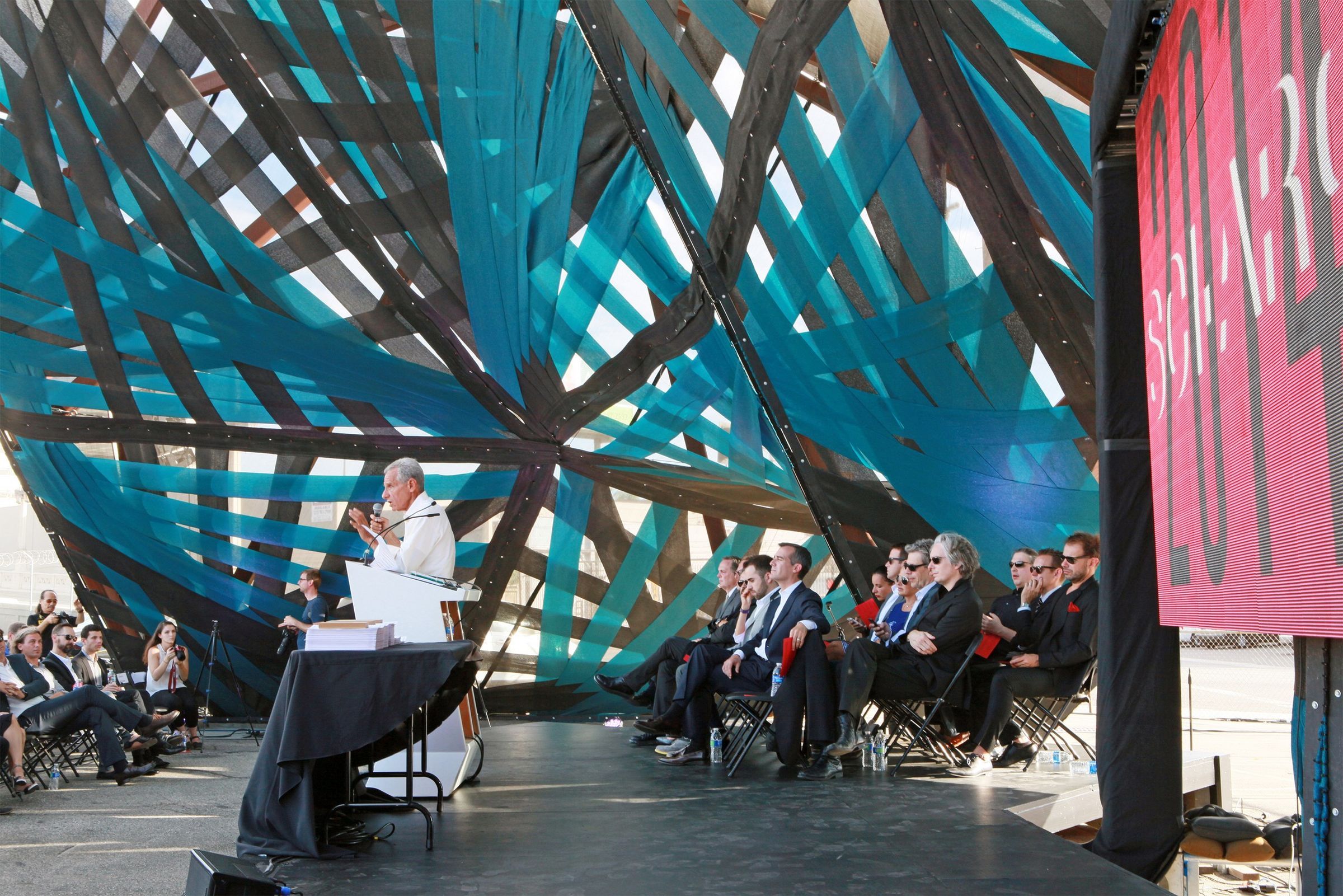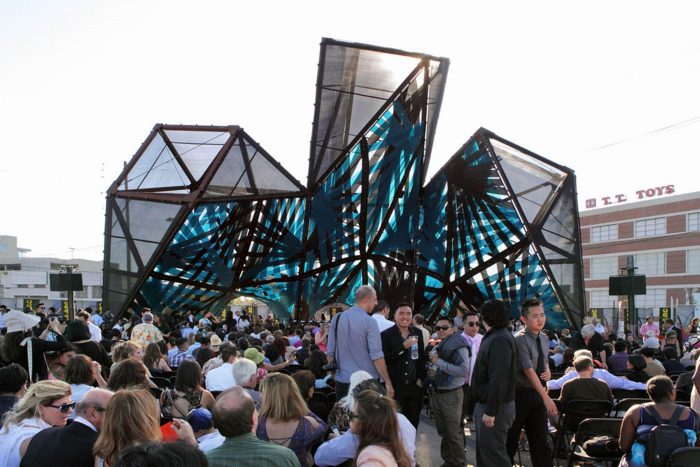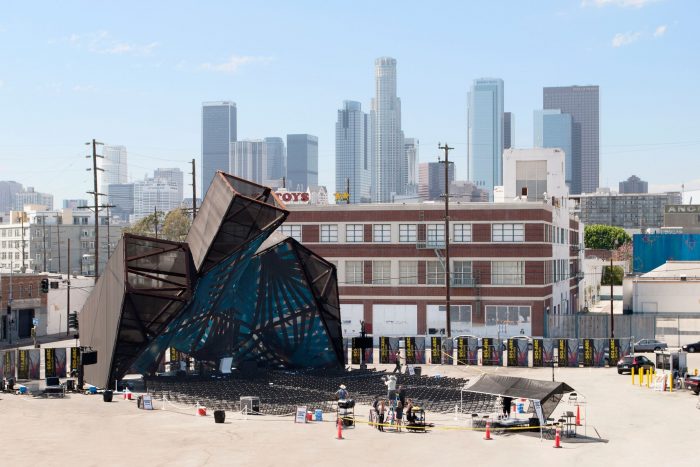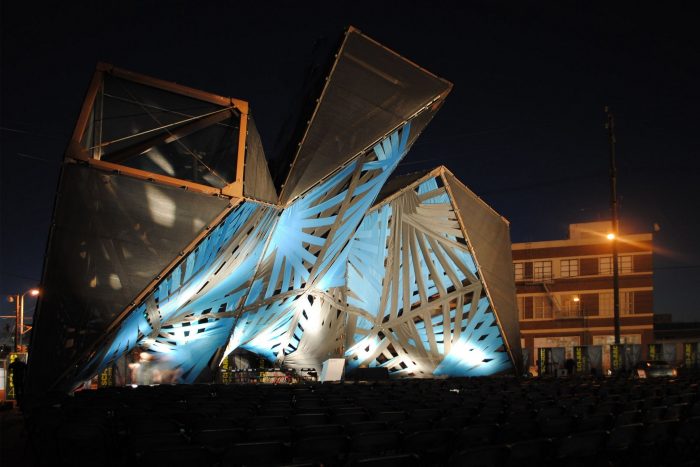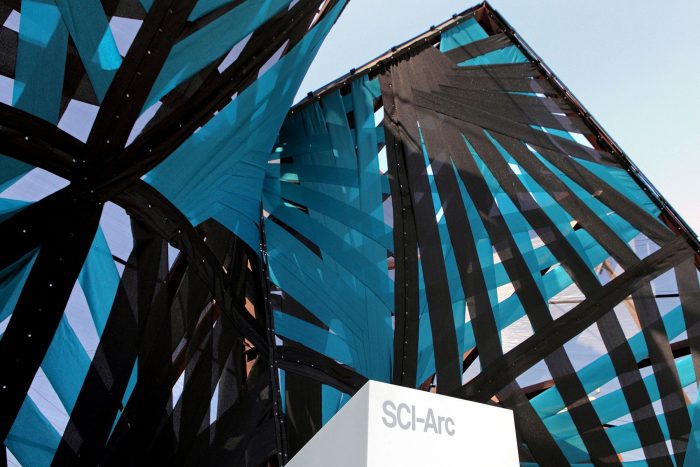P-A-T-T-E-R-N-S proposal of SCI-Arc Pavilion aims to fully exploit what we recognize as the most fundamental aspect underlying the project: the temporal use of the pavilion as a large outdoor event space. Due to its lack of programming, the conventional graduation pavilion suffers immediately after its purpose has been met, transforming from a place of spectacle to an abandoned vessel. If another pavilion is to be built, the scale of the project demands that it should not exist for a single usage, rather, it should become an icon that attracts public events from the surrounding community. We believe that if executed correctly, the pavilion could potentially activate a node within the downtown area.
The New Sign: Bringing SCI-Arc to the Streets…
Positioning the pavilion at the corner of 4th and Merrick Street allows the project to afford a double life: one as an outdoor public event space, and another as a formal beacon that reasserts SCI-Arc’s institutional presence in downtown Los Angeles. The intention of this placement is that when seen from 4th street, the new structure will serve as a natural marquee for SCI-Arc Campus. Due to both its placement and visibility, the pavilion can become a suitable venue for SCI-Arc to engage outside audiences from the downtown community.
A Formal Backdrop
By developing the project vertically, the resulting form produces enough shadow during the early and late hours of the afternoon, allowing comfort zones that are sheltered from the sun. More importantly, its figural shape acts as a natural envelope for the graduation ceremony, providing students and families controlled views in what it is otherwise a fully open parking lot.
The proposed organization of the audience follows both the intended tripartite break-down of a seating arrangement and the incidence of shadow paths on it during a four-hour period. As a result, the organization of the audience is dynamic by necessity, allowing for a maximum capacity of 1000 to be seated comfortably in the shadow, and for various groups to be allocated separately with students taking the central and left front portion.
Staging the Ceremony
The zig-zagging profile of the platform takes full advantage of the vaulted interior, creating a natural path engages the students by circulating them through the arches. This configuration allows enough space for a line to be formed prior to each student receiving their diploma at the speaking podium. Framed below the third vault is the seating area for faculty and speakers.
Primitive Ambiguity and
Textured Vaults
Volumetric and graphic, the intent of the project is to assert a certain ambiguity in its formal reading. Starting from the definition of the audience, the needed shadow path in the ground is projected upward, producing as one of its possible instantiations, three fingering rectilinear volumes. By depicting simple volumes from the street and a carved unified grouping of enveloping surfaces from the interior, the proposal provides a dual reading: a simple outline from far away and complex radiating superficial texture at close range.
The three fingering volumes are carved with three large saddle surfaces. These concave surfaces produce a vaulted interior, which further articulates the organizational sequence of the event. Furthermore, by touching the ground at four points, they envelop the audience producing favorable acoustic and visual conditions for events. The visual and material definition of these elements will be the result of a layering technique germane to contemporary composite sail-making, wherein various fabric strips are layered, stitched and seamed together to produce a larger elastic cloth. Subjected to straight edges, each of these cloths is then fixed in place where it adopts its final shape.
Project Details:
Project name: League of Shadows
Program: SCI-Arc Graduation and Public Event Pavilion
Client: Southern California Institute of Architecture (SCI-Arc)
Status: Competition
Dates: August 2012 – June 2013
Location: Los Angeles, CA
Team: Marcelo Spina, Georgina Huljich, Matthew Kendall, Daniele Profeta, Elias Arkin, Viola Ago, Mike Wang
Engineer: Matthew Melnyk: Nous Engineering
